All about the canadian scarlet
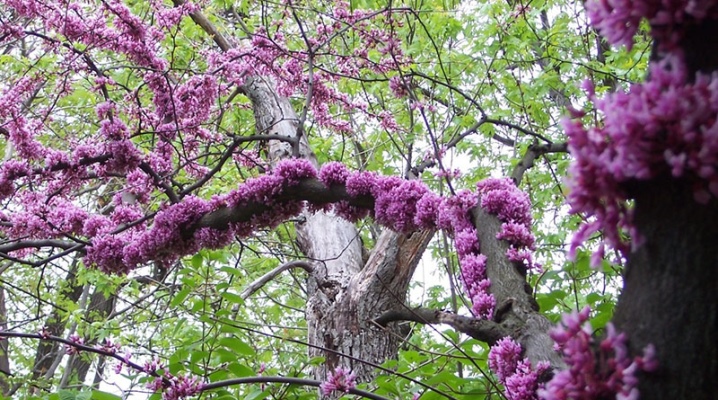
Cercis is popularly known as the scarlet. It is recognized as one of the most ornamental plants - it gained fame due to its bright and unusual flowering, which truly mesmerizes with its enchanting beauty.
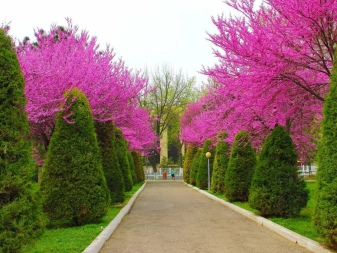
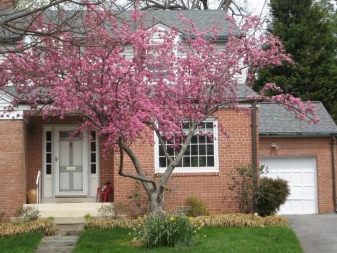
Description
In nature, the canadian scarlet grows in North America from New York to Florida, it grows in Nebraska, Texas, as well as Iowa and Mexico City. In a cultivated form, it is widespread on the Black Sea coast, it is found in Tbilisi, Yerevan, Baku, as well as in Ukraine. It can grow in Central Asia.
Ruga canadensis is a deciduous plant with good winter hardiness. The culture has become widespread in gardening and landscape design. Belongs to the legume family.
Cercis grows in the form of a tree or shrub, has a tent-shaped crown. In favorable climatic conditions it grows up to 12-18 m. The trunk and branches are covered with dark gray, almost black bark. Young shoots have a red-burgundy tone.
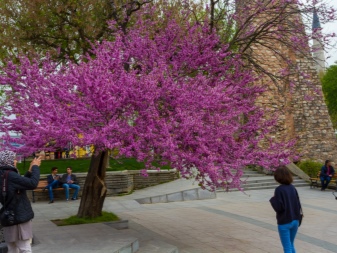
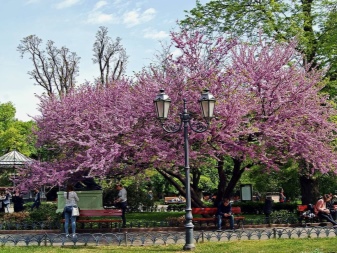
The leaf plates are cordate, slightly elongated, pointed at the apex. Slightly pubescent below. At the beginning of spring, the leaves bloom in bright green colors, by summer they become dark, and with the onset of autumn they play with red and burgundy shades.
Flowering occurs in the second half of April - the first decade of May. Flowers 1.5-2 cm long are painted in pinkish-lilac or light pink color. Collected in volumetric bundles of 5-8 pieces. Fruiting begins in late September - early October. The fruits look like beans 6-10 cm long and 2-2.5 cm wide, can hang from branches for several years. Seeds are oval, 5-6 mm long and 3-4 mm wide, dark brown color, 1000 seedlings weigh 20-30 g.
It is interesting that cercis is popularly called the "Judas tree" - according to legend, it was on it that the traitor Judas Iscariot hanged himself. However, there is not a single fact that could prove this theory. The gloomy legend has absolutely nothing to do with the luxury of crimson.
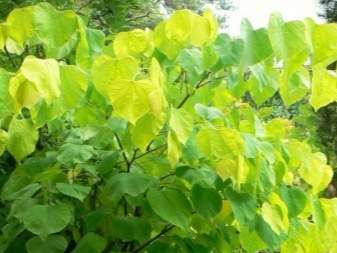
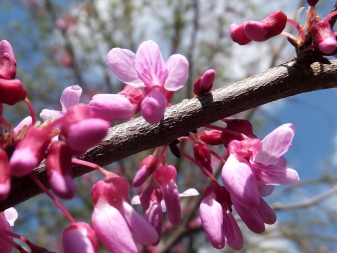
Popular varieties
Thanks to the efforts of breeders, many interesting hybrids have appeared with decorative foliage and colorful flowering. It is no coincidence that most forms of scarlet are a bright accent in garden design. This plant retains its unusual appearance throughout the growing season from early spring to late autumn.
-
Cercis "Alba" delights with delicate white flowers.
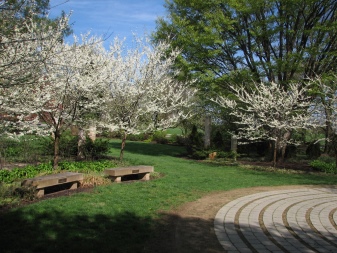
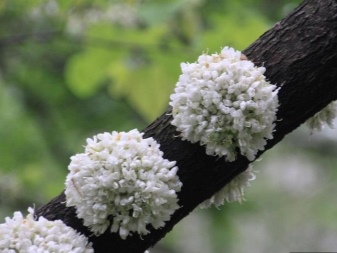
- "Pink Charm" and "Pinkbud" - varieties with rich pink inflorescences.
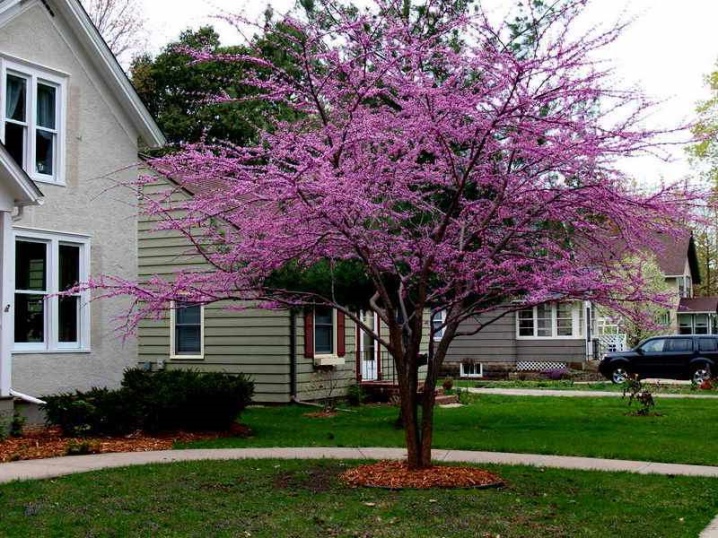
- "Silver Cloud" differs in variegated whitish-green foliage. Due to this, it retains a spectacular appearance throughout the entire spring-autumn period.
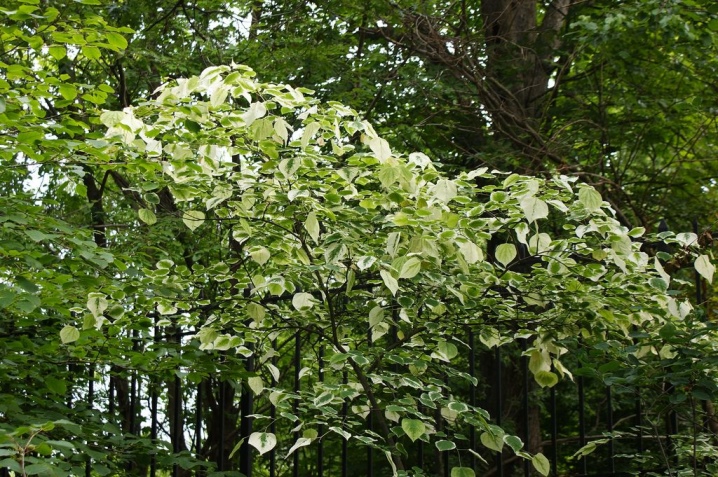
- "Ruby Falls" - a rather interesting variety, reminiscent of a low weeping willow. Its elongated branches rush down and fall like a cascading waterfall almost to the ground. The leaf plates are large, burgundy, green or lilac-brown in color.
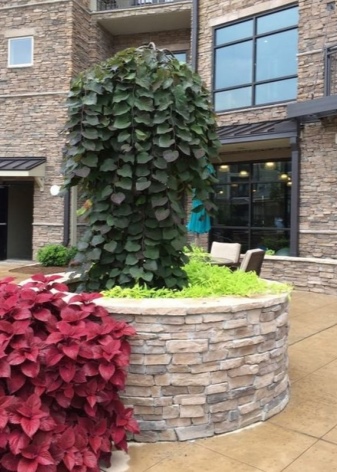
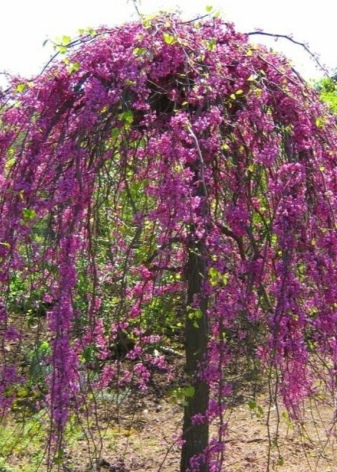
- Whitewater - a hybrid variety in the form of a low-growing tree, the result of crossing the varieties "Silver Cloud" and "Ruby Waterfall". A distinctive feature is the almost white leaves.
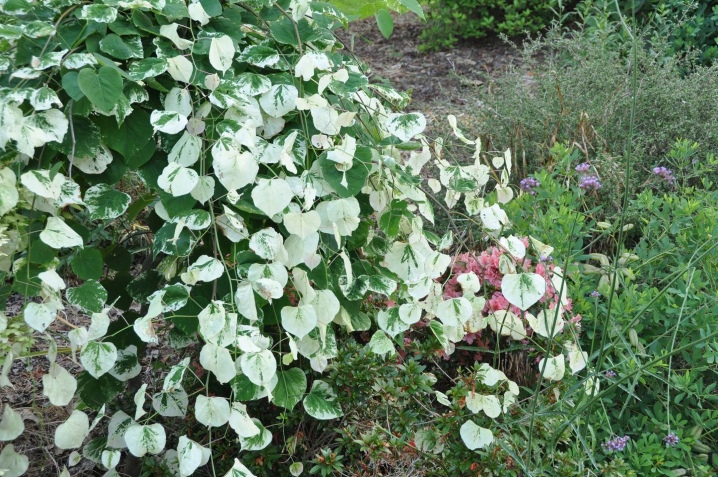
- Rising Sun - a small tree with unusual foliage. At the tops of the shoots, they are bright, emerald green with a golden hue in contrast.The colors of the leaves are so colorful that the tree gives the impression of being fake. Heart of Gold has some similarities with this variety, with leaves of a bright golden hue.
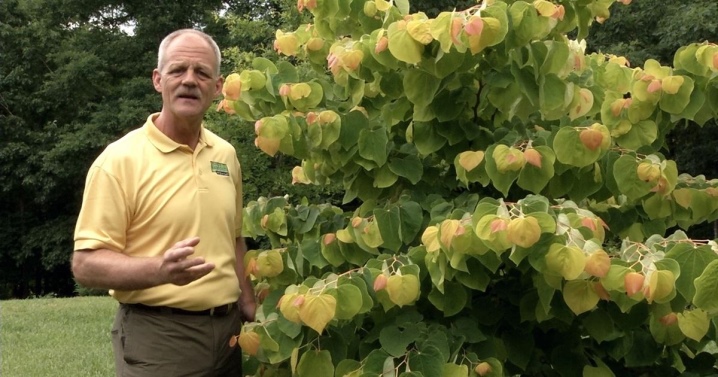
- "Flame" - a subspecies of crimson with semi-double flowers. This plant does not bear fruit.

- Forest pansy - a dark-deciduous form of a low shrub, loved by gardeners for its wide crown. The leaves are burgundy in summer and golden in autumn.

- Little woody - a bush that grows up to 3 meters. The bloom is purple. It has a compact shape that is retained as it grows, therefore it does not require molding.
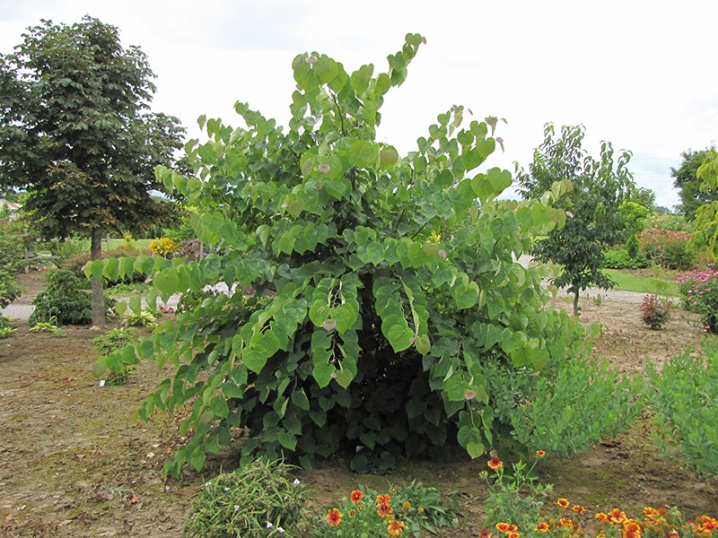
The varieties "Rising Sun" and "Herz of Gold" (Heart of Gold) are also very popular among gardeners.
Landing rules
It is better to buy seedlings in nurseries, preference should be given to planting material with a closed root system. In this case, you can plant the plants both in the spring and in the summer by the transshipment method, reducing the risk of damage to the roots to zero. Trees with open roots usually take root slowly and in most cases do not take root. It is better to plant the purple grass immediately on a permanent site, since they have a pivotal root system that goes deep into the ground. Already a year later, replanting the plant will be very problematic.
The scarlet plant prefers warm, sheltered from gusts of wind areas - a draft often causes plantings to freeze out in winter. Culture needs good lighting. Abundant and prolonged flowering is possible only in full sun or in light partial shade, but with the condition that at least several hours a day the plant is flooded with light.
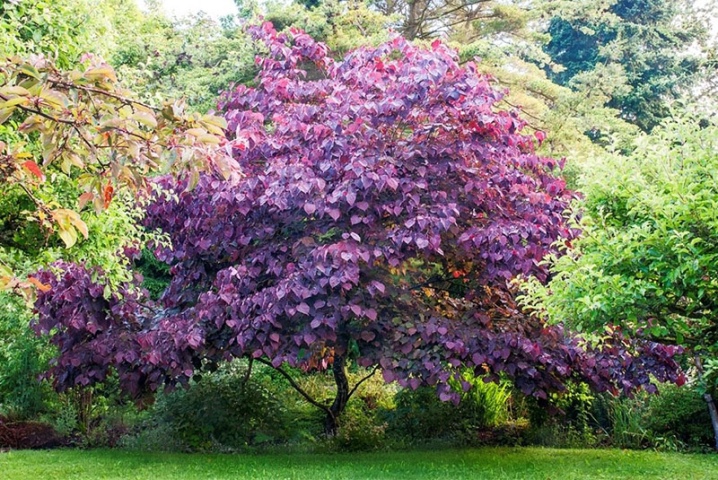
Cercis prefers fertile, well-drained, moderately moist soils with a slightly alkaline or neutral reaction. This culture does not tolerate clay soils, and excess moisture is destructive for them.
Add a little lime and three parts of compost mixed with garden soil to the planting hole. The planting is carried out so that the root collar remains 3-4 cm above ground level. After the completion of the procedure, the young plant is abundantly moistened, and until the seedling takes root, the substrate is not allowed to dry out. To do this, sprinkle the ground in the near-trunk circle with mulch - it is best to take ground coniferous bark for this.
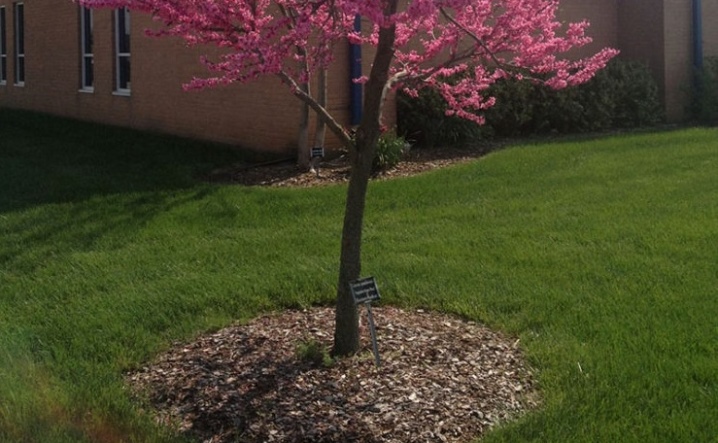
Care features
Caring for crimson leaves includes a number of mandatory procedures.
Watering
Cercis prefers good hydration. However, it should be borne in mind that he needs abundant watering only in the first years of seedling growth. For mature trees, rare watering is enough; in central Russia, they are quite content with rain and melt water. Additional irrigation is used only on dry days when the land is very dry.
At the same time, excess moisture is unfavorable for the culture - in this case, the roots will begin to rot, and this will make it impossible to deliver water and nutrients to the aboveground parts of the plant.
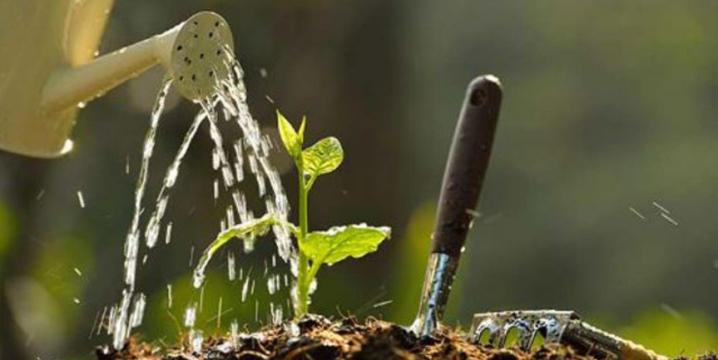
Top dressing
For full-fledged growth and development of cercis, nutritious dressings are needed.
The first time fertilizers are applied in the spring after the snow melts: during this period they need organic matter.
For the second time, the purple rose begins to fertilize from mid-June - at this time, it is better to give preference to ready-made mineral compositions with a high nitrogen content.
At the end of summer, the plant responds well to mineral compositions with a predominance of potassium and phosphorus.
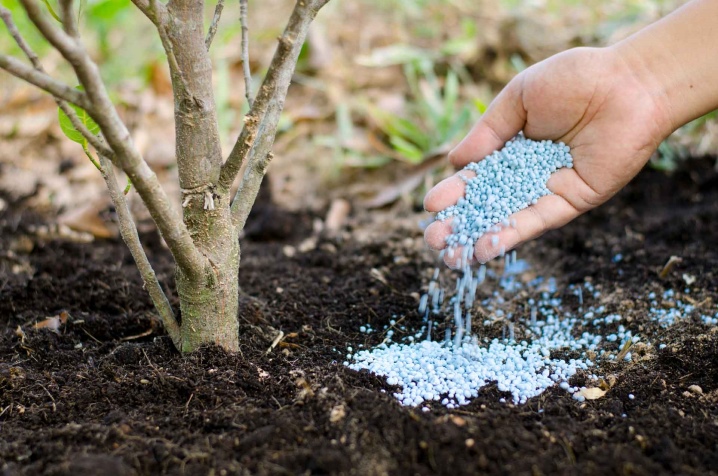
Pruning
The crown of cercis is formed only for the first 5 years, after which decorative pruning is no longer required for the plant. But the sanitary one needs to be carried out annually, it is best to do this in the fall.
The branches are shortened by a third of the length, diseased, broken branches are cut off and the improperly growing shoots that thicken the crown are removed. Cut plots must be treated with garden pitch.
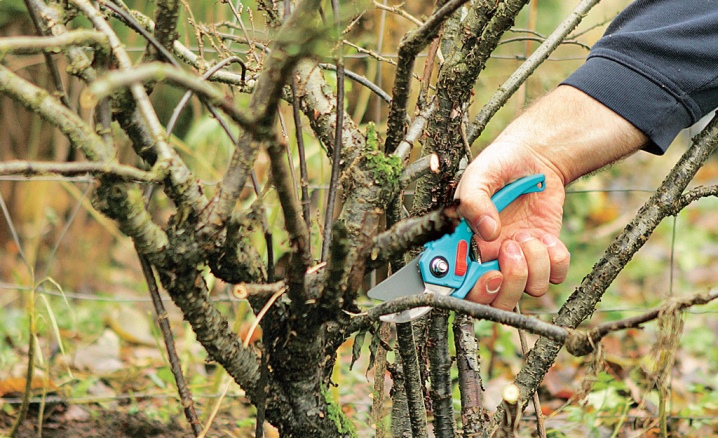
Reproduction
Cercis is propagated by cuttings or seeds. The seed method is very successful. But it takes a long time, in addition, it does not give any guarantee that the main characteristics of the parent plant will be preserved.
Seeds are harvested from ripe pods before opening in October-November. They need cold stratification, because the seed is dried at room temperature, and then placed in the cold for 1.5-2 months. If you leave the seeds outside, then in winter they will undergo natural stratification.
Unlike seedlings of other legumes, which germinate after 3-5 days, the crimson seeds have a rather dense layer, they need scarification. To do this, you need to rub the peel of the seeds with fine-grained emery, or make a few thin scratches with a knife. Before planting, the seeds are soaked in a pale solution of potassium permanganate to prevent the development of diseases.
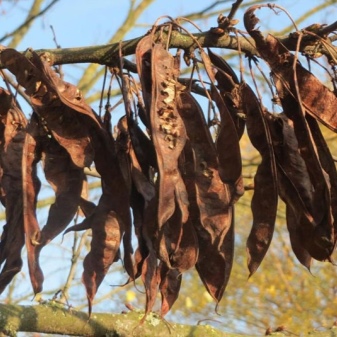
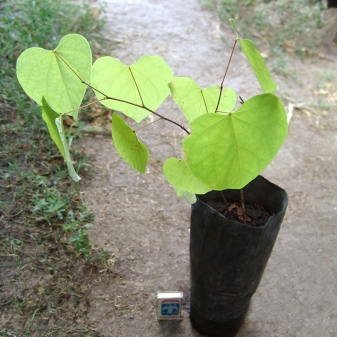
After processing, the seedlings are planted in a prepared substrate, consisting of nutrient soil and perlite in a combination of 1 to 1. The seedlings are buried 2.5-3 cm. Drainage should be provided at the bottom of the container. The container is covered with foil or glass, the temperature inside the greenhouse should be maintained at 18-20 degrees Celsius, the substrate should be humidified. Every day, the greenhouse should be opened for 1-1.5 hours - this way you can provide effective ventilation and prevent rotting of seedlings. As soon as the first shoots hatch, the greenhouse is removed, and the pots are placed in a place with bright but diffused light.
When the threat of recurrent frost has finally passed, the grown sprouts can be gradually hardened. To do this, they are taken outside for a couple of hours every day. Nevertheless, they can be planted in open ground only after a year.
The propagation method using cuttings is more complicated. Harvesting of planting material is carried out in mid-October, cuttings are cut by 20-25 cm and placed in moistened sand, deepening by 3 cm.
It is very important to monitor the moisture content of the substrate throughout the entire cold period. Rooted cuttings are placed on a permanent site only after the snow has melted.
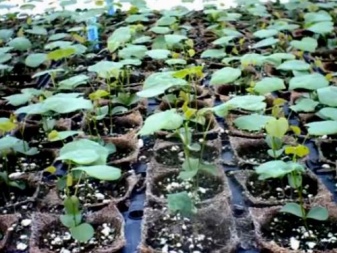
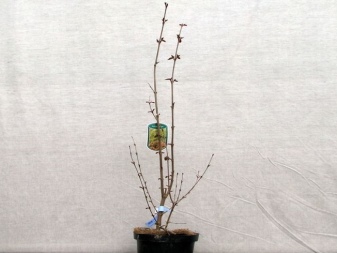
Diseases and pests
The purple root is susceptible to any lesions by the fungus, therefore, special attention should be paid to the prevention of infections, timely removal of all affected areas of the plant. More often than others, verticillary wilting occurs in cercis - this is a pathology of the rhizome, which is externally manifested by the death of young shoots, yellowing and subsequent discarding of leaves. Cut branches and leaves showing signs of disease should be burned.
Of the pests, plants are mainly affected by caterpillars; the drugs Bitoxibacillin, Lepidocid and Monsoon are effective against them.
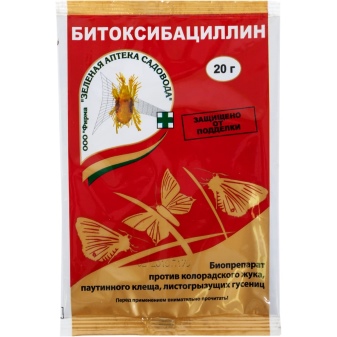
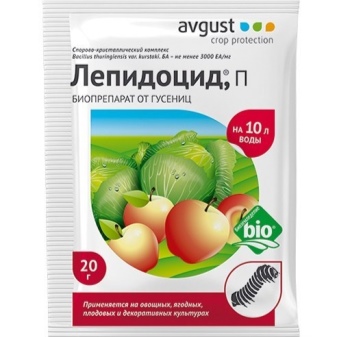
Bagryanik in landscape design
The scarlet tree is especially beautiful during its flowering. The sight is truly magnificent - almost the entire tree is covered with amazingly beautiful, gathered in bunches, inflorescences of lilac, pink, purple, lilac, white or black color.
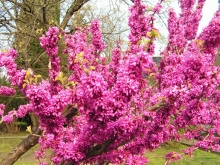
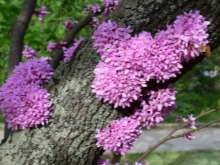
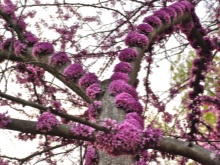
When used in garden design, the scarlet tree retains its decorative effect all year round. In the springtime, gardeners enjoy abundant flowering, with the onset of summer - the variegated color of the leaves. And on frosty days, long pods with beautifully hanging beans delight the eye.
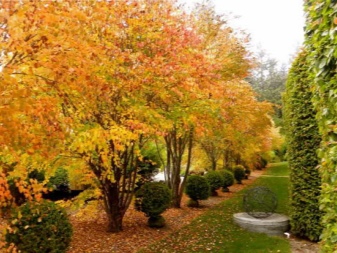
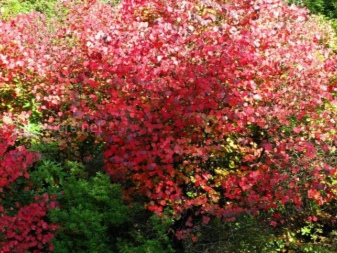
Most often, the culture is planted in a single planting - so it can demonstrate itself in all its glory. But scarlet looks good in tandem with undersized pines, thujas and junipers.
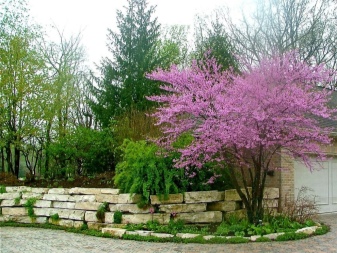
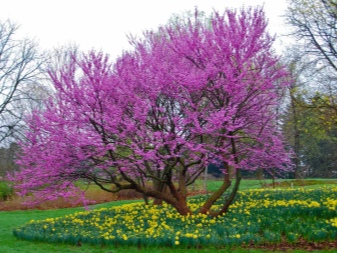
The alleys of the Judah tree look especially impressive. This plant looks especially organic in the eastern landscape.
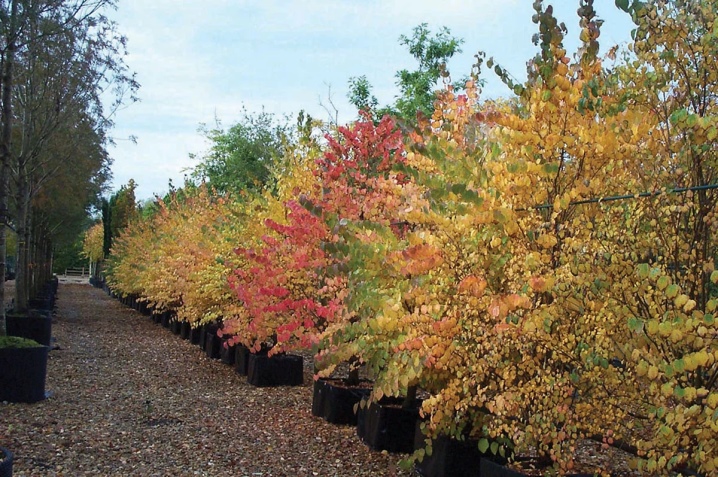
The ragweed canadensis does not give its owners any problems when growing, and over time they become a spectacular decoration of any garden. At any time of the year, he attracts the eyes of the owners of the house, their friends and ordinary passers-by.
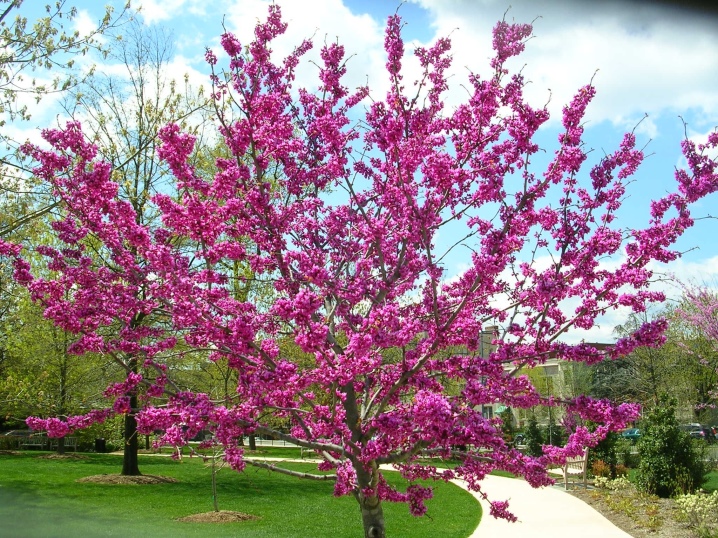
Tips for the care and cultivation of canadian scarlet in the next video.





























































The comment was sent successfully.